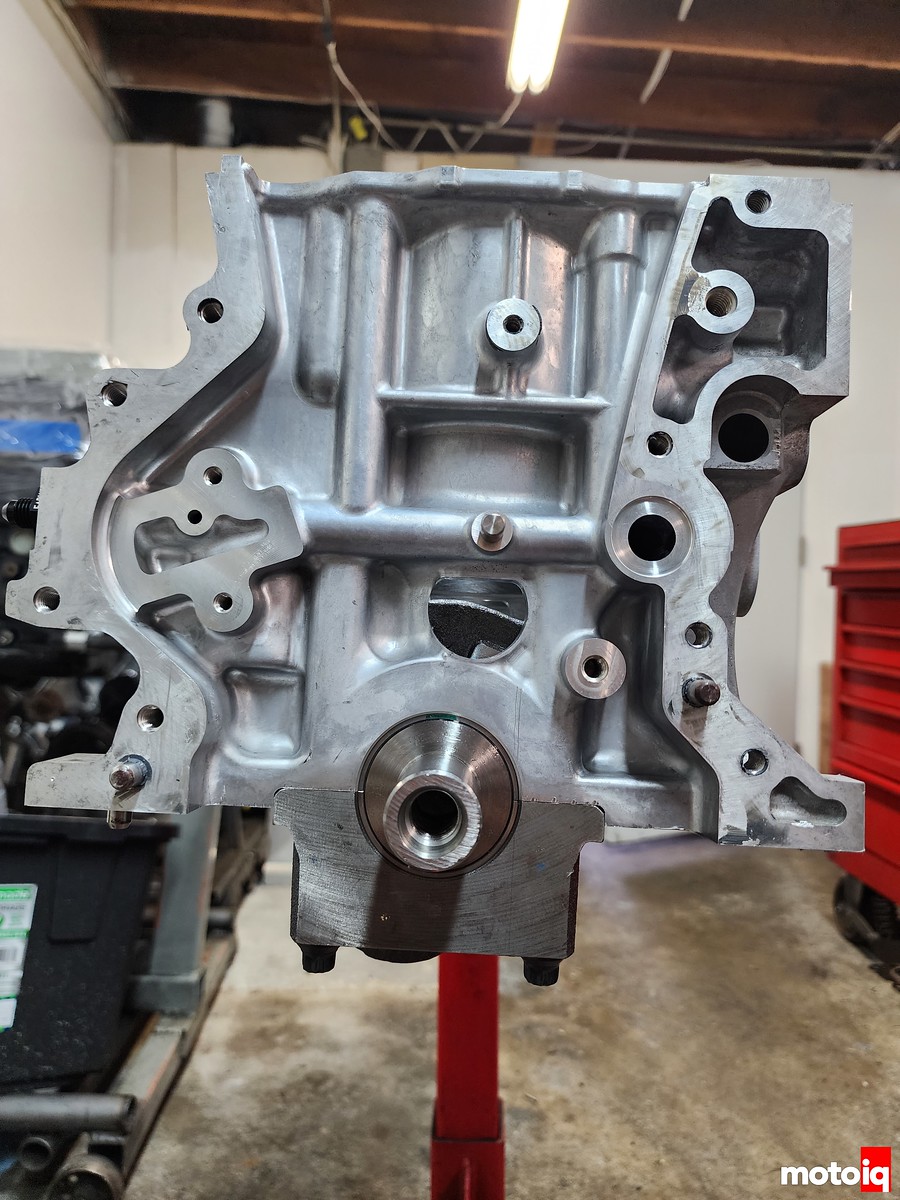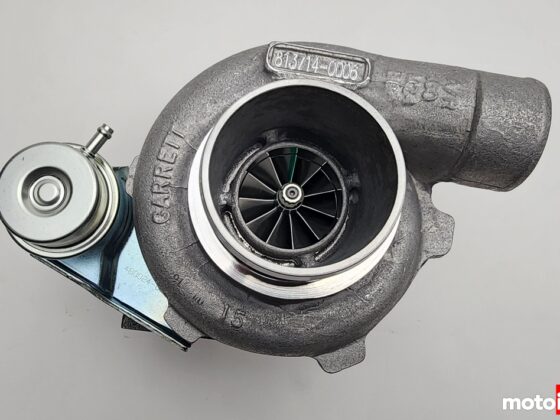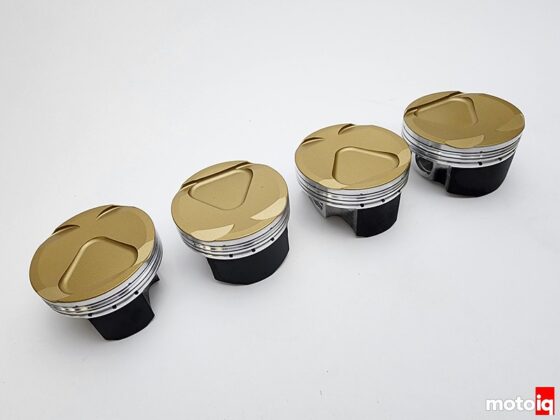
By looking down the bore, the amount of crank offset is amazing to see! Another unusual feature is the extremely smooth bore finish. We have never seen bores this smooth on any engine before. They are almost polished. This is to reduce friction to the minimum and to be compatible with the OEM DLC or PVD-coated rings. You can also see the orientation of the piston cooler nozzle here.

The MR20DD has an open deck block. Many modern engines are open deck for several reasons. Open decks have more even heating of the top of the bore which is better for hydrocarbon emissions. Open deck blocks have less bore distortion when assembled. Making closer piston-to-wall clearance, better ring seal, less noise, and less friction possible. Open deck blocks are also easier and greener to manufacture, as they can lend themselves to investment casting more readily. The biggest drawback is that they tend to have cylinder sealing issues and cylinder wall breaking issues at high boost levels. This will also be a limiting factor in determining our safe boost level and power output. If we were to do further development on this engine, we would scan the block and design a CNC machined closed deck insert to reinforce this area. However, we can make the open deck work well on reasonable pump-fuel levels of boost with no problem.

Now let’s have a look at the most important items for more turbocharged power production; the pistons, rings, pins, and connecting rods. As a note, these parts were not designed to make tons of turbocharged horsepower, but to have minimum reciprocating mass for good response, to be quiet, to have low friction for good fuel economy, and to have low emissions.




7 comments
I wouldnt´t worry too much about the unsupported main caps.
AMG M139 and BMW B58 have 2-bolt main caps without any girdles and they do just fine with one being the highest specific power 4-cyl ever made and the other being capable of 1000hp with bolt-ons.
Tiny main bolts ar a drawback though.
Interestingly the bore/stroke numbers (84/90.1) are also quite similar to the AMG 83/92 and BMW 82/94.6.
That goes with my understanding that a small cylinder bore with a long stroke almost always lends itself well to turbocharging. In part due to faster burn time.
Have you looked towards the MR16DDT oil pump assembly? No balance shafts and looks to be a straight swap to the MR20DD block. Also the MR16DDT comes with a girdle, which I’m sure with some machining would fit the MR20DD.
It’s not just the matter of two bolts, it’s the flimseyness of the caps and the register area of the caps. Due to the compressed time we didn’t investigate the Juke gridle but my thinking is it probably helps if it is adaptable. We just didnt have the time to have studs made and then machine and align bore the block.
Mike, you mentioned tight timeframe – is this a SEMA project? Doesn’t make any difference to me one way or the other, just curious.
stick around and find out!
Will do!
Very cool to see all this tech in a lowly Sentra. Subaru, why can’t you even do this on your “sport” engines?
I like how the piston pins are already showing slightly concerning wear patterns even at stock power level and not much mileage. I thought the connecting rods would be the real main underbuilt parts of the bottom end, but nope, turns out the whole bottom end is underbuilt. Oh, Nissan.